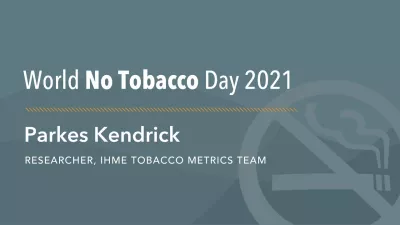
Parkes Kendrick, Research Scientist, Lead Author of the Chewing Tobacco Paper, IHME Tobacco Metrics Team
Transcript has been lightly edited for clarity
The health risks for chewing tobacco are well documented, in particular the evidence for the risk of oral cancer. Although it’s not as widely used as smoke tobacco around the world, there are still a very large number of people who use chewing tobacco. In 2019 almost 274 million people used the product. This use is particularly high in certain regions around the world, for example, in South Asia. But it’s also high in regions such as North Africa, the Middle East, and some island nations. Chewing tobacco prevalence also differs quite a bit in the nature of use from smoke tobacco prevalence. For example, often females use chewing tobacco at a higher rate than males do. In Cambodia, the age-adjusted rate for females was ten times higher than that of males. We also see that chewing tobacco prevalence can be quite high in older ages as compared to middle-aged people.
The patterns in chewing tobacco prevalence are quite different from smoke tobacco prevalence and this is part of why countries may need to enact stronger policies that specifically target chewing tobacco use. We actually see the fact that tobacco intervention policies have not done as much for chewing tobacco use in our study. We compared the use of smoke tobacco over time to that of chewing tobacco.
There have been fairly large significant declines in smoke tobacco use, but the prevalence of chewing tobacco has been fairly stable over time. This means that countries need to be enacting specific policies targeted at chewing tobacco use so that we can curb this super unhealthy habit.